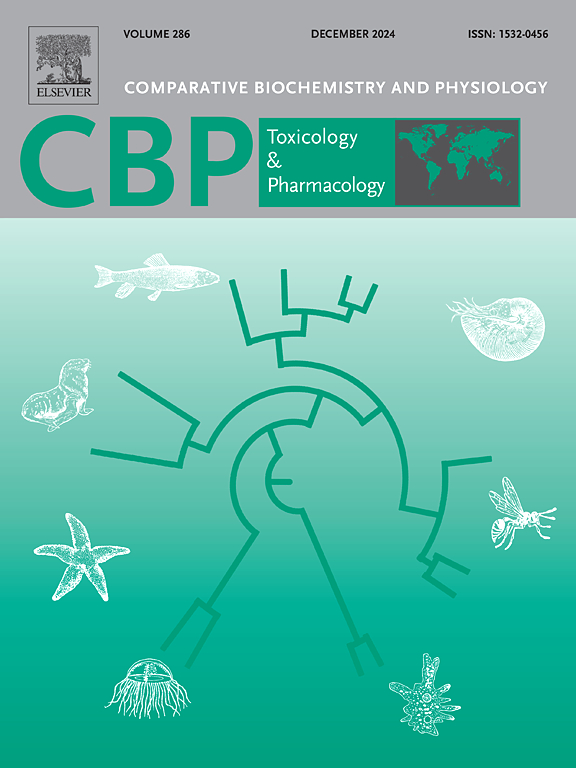评估水生生态系统中的新烟碱污染:系统综述和文献计量学内容分析
IF 3.9
3区 环境科学与生态学
Q2 BIOCHEMISTRY & MOLECULAR BIOLOGY
Comparative Biochemistry and Physiology C-toxicology & Pharmacology
Pub Date : 2025-04-15
DOI:10.1016/j.cbpc.2025.110207
引用次数: 0
摘要
新烟碱的广泛使用和分布导致其在水生生态系统中大量积累,对非目标物种和人类食物链构成严重的生态风险。本综述采用文献计量学分析来考察2013年至2023年的全球研究,突出了主要趋势、进展和研究重点。此外,我们通过含量分析总结了NNIs在各种水生环境中的全球分布,并在受控的实验室条件下评估了它们的生态毒理学效应。我们的研究结果表明,全球对水生系统中NNIs的关注日益增加,研究工作主要集中在受其使用影响最大的地区。不同水体中存在的核电站凸显了污染的广泛存在,中国面临的污染尤为严重。然而,关于NNIs在水生环境中的安全性研究仍然不足。未来的研究应侧重于通过实地调查监测慢性NNIs暴露及其长期生态影响。此外,开发微生物配方、整合植物修复和结合多种技术协同作用对于制定可持续战略以减轻NNIs污染、保护人类健康和保护水生生态系统至关重要。本文章由计算机程序翻译,如有差异,请以英文原文为准。

Assessing neonicotinoid pollution in aquatic ecosystems: A systematic review and bibliometric-content analysis
The widespread use and distribution of neonicotinoids (NNIs) have led to their significant accumulation in aquatic ecosystems, posing serious ecological risks to non-target species and the human food chain. This review employed bibliometric analysis to examine global research from 2013 to 2023, highlighting key trends, advancements, and research priorities. Moreover, we summarized the global distribution of NNIs in various aquatic environments through content analysis and assessed their ecotoxicological effects under controlled laboratory conditions. Our findings indicate a growing global concern about NNIs in aquatic systems, with research efforts primarily concentrated in regions most affected by their use. The presence of NNIs across different water bodies highlights widespread contamination, with China facing particularly severe pollution. However, research on the safety of NNIs in aquatic environments remains insufficient. Future studies should focus on monitoring chronic NNIs exposure and its long-term ecological impacts through field research. Moreover, developing microbial formulations, integrating phytoremediation, and combining multiple technologies for synergy are crucial for developing sustainable strategies to mitigate NNIs pollution, protect human health, and preserve aquatic ecosystems.
求助全文
通过发布文献求助,成功后即可免费获取论文全文。
去求助
来源期刊
CiteScore
7.50
自引率
5.10%
发文量
206
审稿时长
30 days
期刊介绍:
Part C: Toxicology and Pharmacology. This journal is concerned with chemical and drug action at different levels of organization, biotransformation of xenobiotics, mechanisms of toxicity, including reactive oxygen species and carcinogenesis, endocrine disruptors, natural products chemistry, and signal transduction with a molecular approach to these fields.

 求助内容:
求助内容: 应助结果提醒方式:
应助结果提醒方式:


